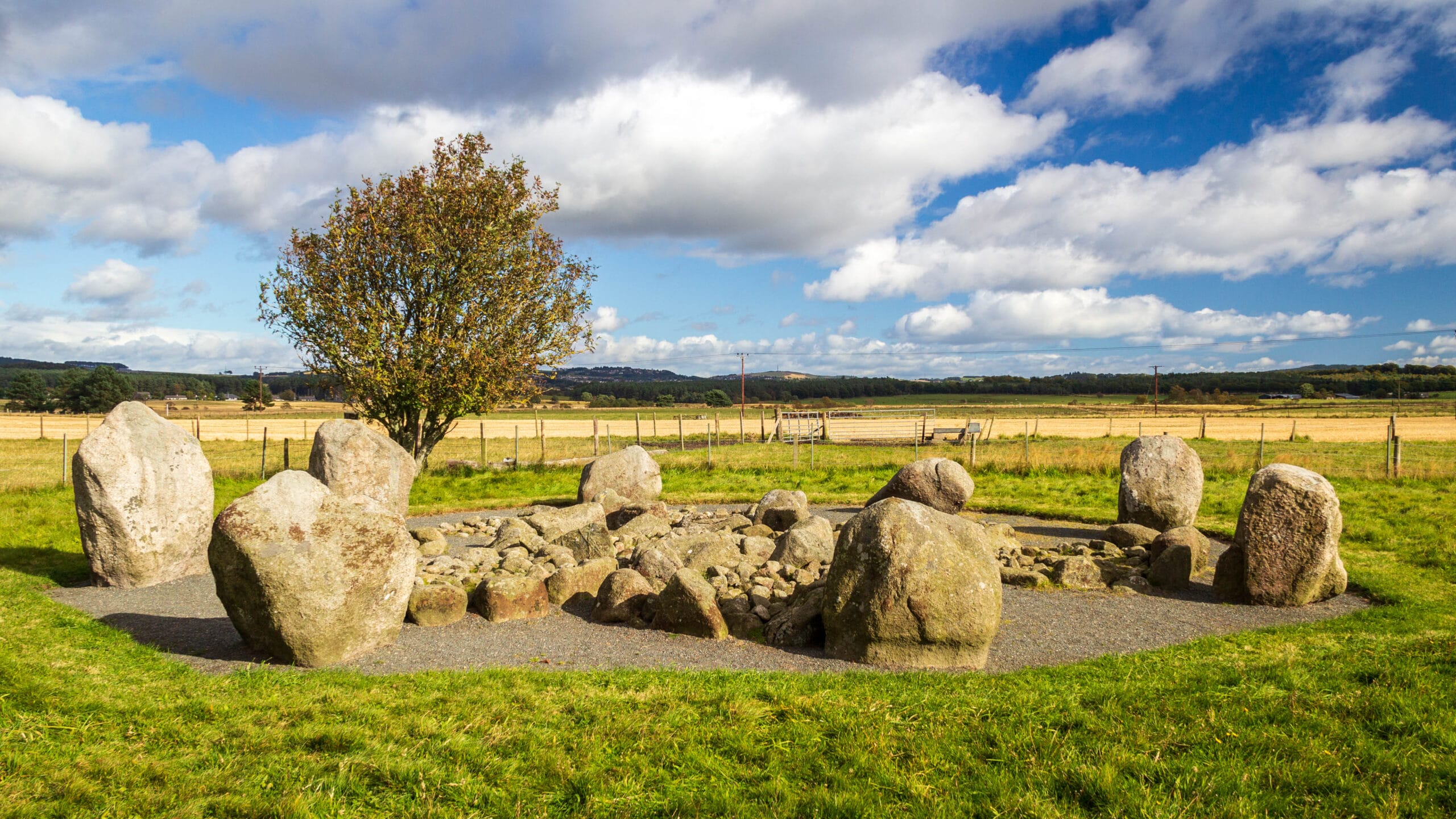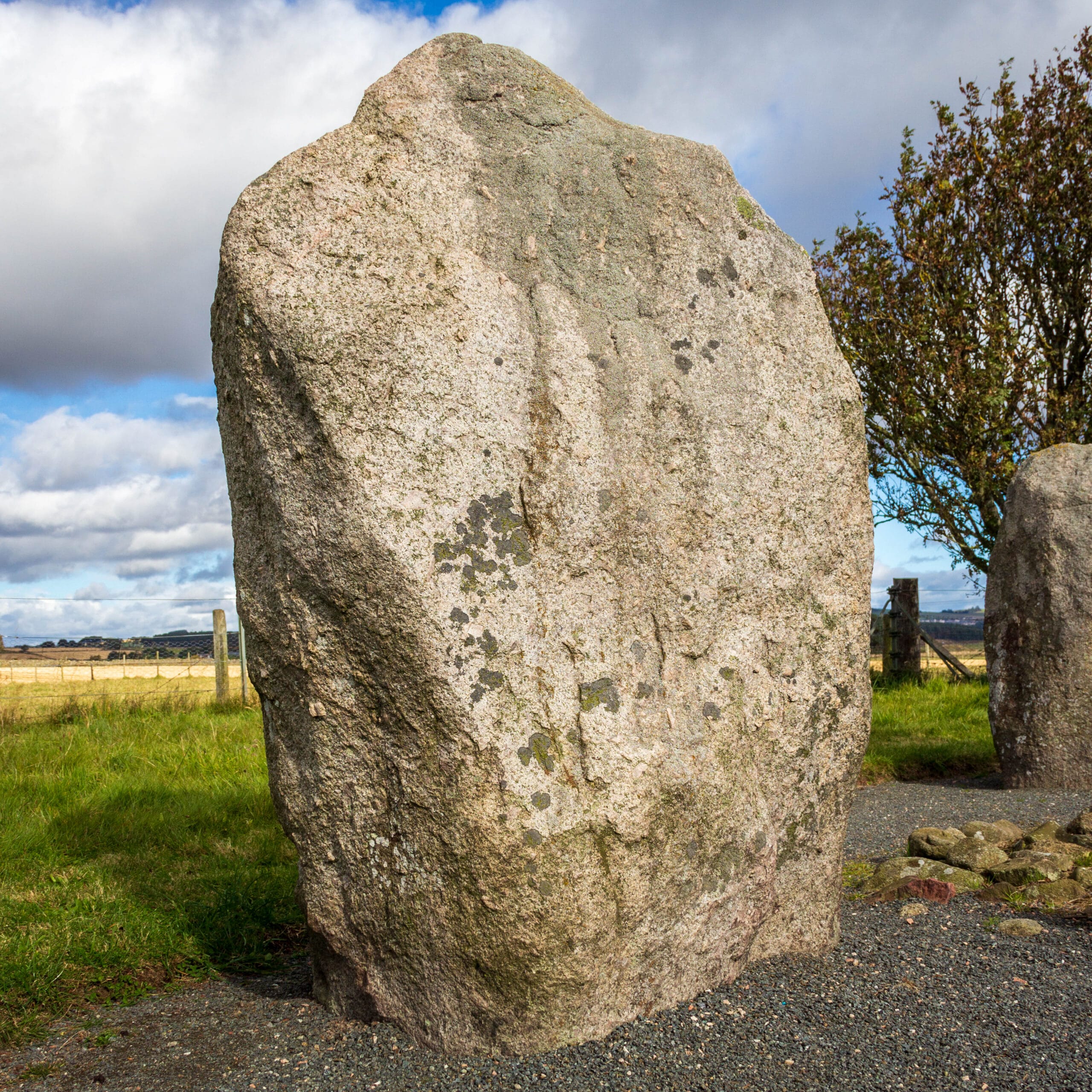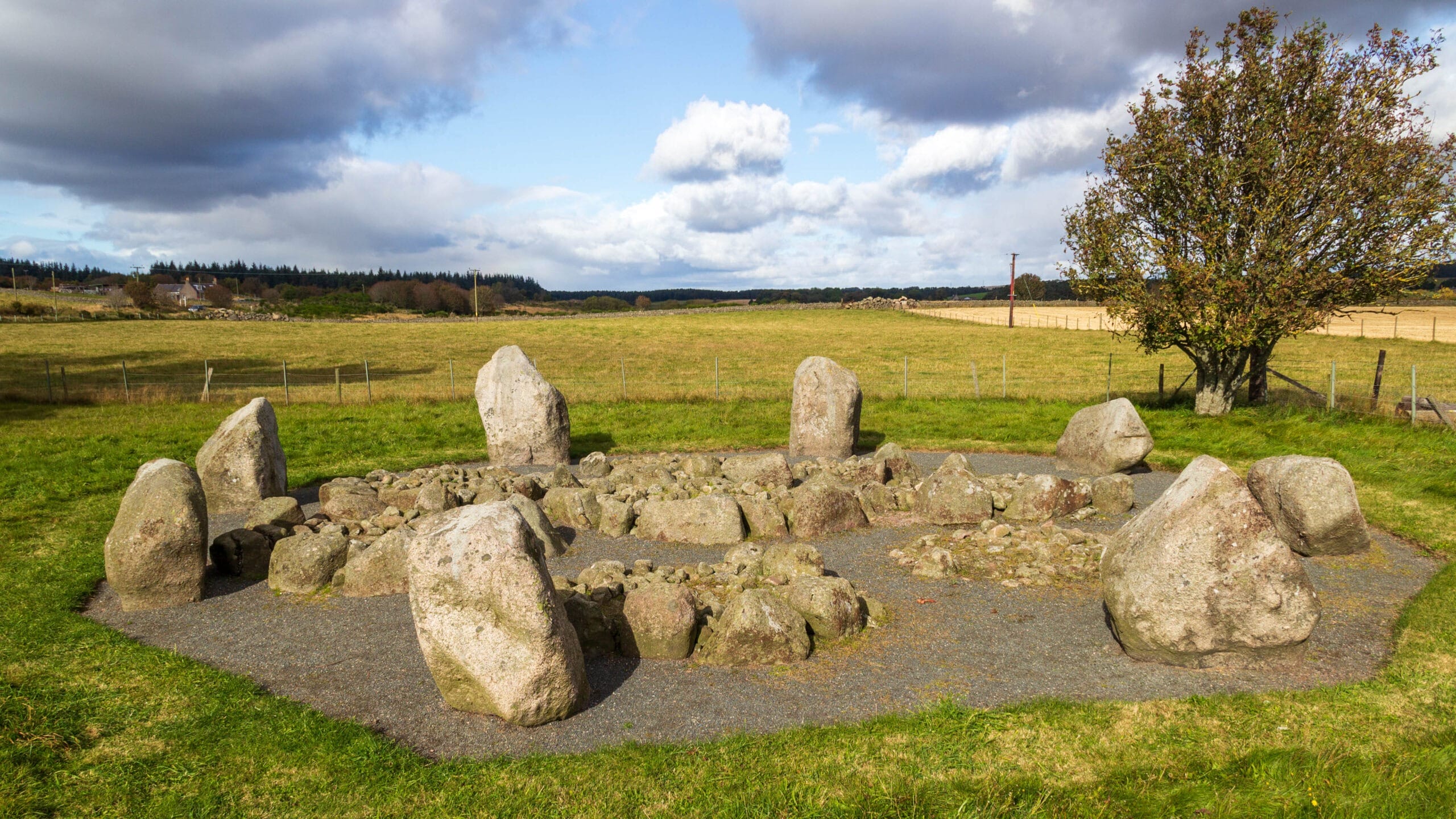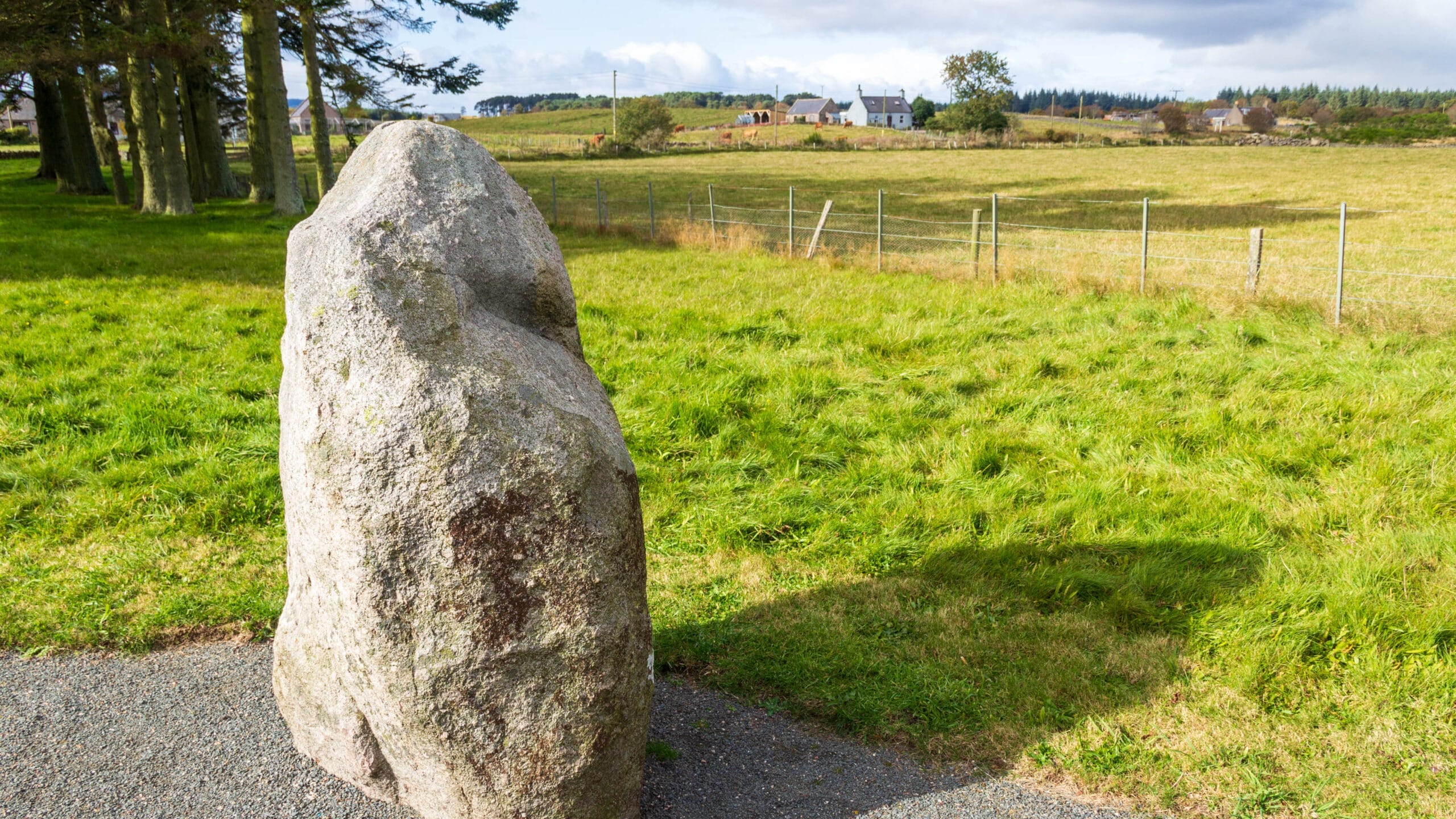Cullerlie is just a small stone circle. That doesn’t make it any less important. Because something sets it apart from all the other stone circles in Scotland.

There are some fantastic stone circles in Scotland: Calanais on the Isle of Lewis, the Ring of Brodgar or the stones at Machrie Moor are just a few impressive examples. In contrast, the circle at Cullerlie seems to be a lesser example. But the small circle has it all.
Because there is a local peculiarity in the east of Scotland. There are around 70 so-called Recumbent Stone Circles around Aberdeen. The German translation is a little bumpy: “Kreis liegender Steine”. They are closely linked to the Clava Cairns near Inverness.
The monoliths of the Recumbent Stone Circles are rather low. The stones of Cullerlie rise between one and 1.8 metres. The circle itself has a diameter of around 10 metres.

It is not entirely clear what the Cullerlie Stone Circle was used for. However, there seems to have been a place in the centre of the circle for burning cinders. In any case, the builders seem to have had a certain penchant for numbers. The stone circle consists of eight stones with eight small mounds in a circle, each of which was demarcated by eleven small stones. Only the largest ring in the centre had twice as many, with 22 demarcation stones. Burnt human bones and charcoal were found in five of these rings.

The location of the Cullerlie stone circle was carefully chosen. It stood on a gravel spit that pushed into the moor of Leuchar Moss. Today it is farmland.
But who were the builders? Because something else is special: the Recumbent Stone Circles were built towards the END of the Neolithic period and were still heavily used in the Bronze Age. This distinguishes them from their large relatives in the north and west of Scotland.
And even here, Cullerlie still occupies a special position. The other examples in Aberdeenshire had a large recumbent stone flanked by two standing stones. The other monoliths were positioned according to size, with the tallest in the south-west. Cullerlie lacks the recumbent stone and the tallest is to the north.

Cullerlie is a small but special stone circle in the east of Scotland. Travellers through Aberdeenshire who are interested in history therefore have good reason to make a stop here.
What you need to know: What else makes the Cullerlie Stone Circle special
Scientists still have a few questions to answer. For example, there is still no definite date for the site. It is also unclear whether Cullerlie was special or whether similar specimens have never been found.
It is also atypical why the Cullerlie stone circle is located on a valley floor, while most stone circles in north-east Scotland were built on high ground.
And finally, what is the significance of the repeating number of kerbstones in the small rings?
Directions
With satnav: enter “AB32 6UX” to get to the area.
Without satnav: From Aberdeen, take the A944 towards “Alford”. Just before the village of Skeene, take the B9119 exit to Tarland. Take this and follow the road until you see a sign pointing left towards “Banchory”. Follow this and take the next road to the left. Drum Castle and the Cullerlie Stone Circle are already signposted here. After a while, you will see a car park on the left-hand side.